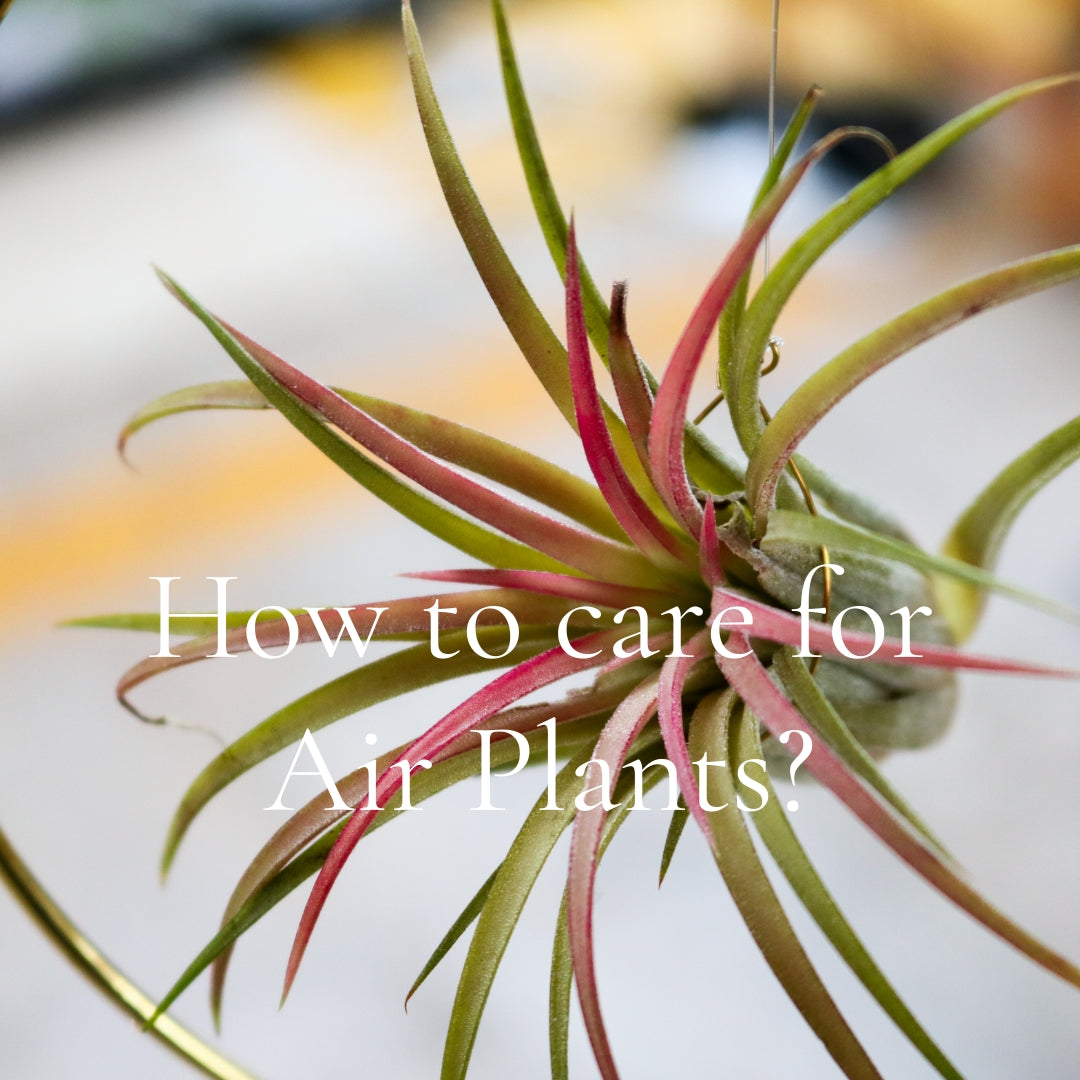Tillandsia or as they are more commonly known as Air plants are a very unique species of plants. They are called air plants because they derive most of their nutrients from the air itself, unlike other plants that depend on the soil as their main source of nutrition.
Tiny scales on their leaves, called trichomes, absorb water and nutrients directly from the air and even help shade the plant from the scorching sun. The plants' "roots" are used only for clinging and do not absorb water and nutrients like earthbound plants. This plant is great for people who are looking for a minimal care indoor plant.
You can choose from a wide variety of air plants online from
here.
Types of Air Plants :
Fuzzy leaves with feathery, white, silver and dusty coatings indicate xeric types that come from sunny, dry climates, where rainfall is less frequent. Their pronounced trichomes collect maximum water when it falls and hold it for use during dry periods. They need watering only once or twice a week and can tolerate more sun.
Image source : https://www.gardeners.com
Smooth, glossy leaves are most common on mesic types that come from shaded, moist rain and cloud forests, where water is plentiful. They have less pronounced trichomes and less protection from drying out and hot sun. They need more frequent watering.
Image source : https://www.gardeners.com
How to take care of your Air Plants :
When you first receive your Tillandsia Air Plant, you should soak it for 30 minutes, and then allow for it to dry completely, overnight, while upside down. In the morning, simply flip your plant over so it's right side up and place it into its new home.
It is natural for the smaller bottom leaves of your air plant to dry up while in transit. It is okay to remove them, as long as you are gentle with the plant while you do so.
1. Air circulation- Since their main source of nutrition is air one has to make sure that they receive proper ventilation. After soaking they should be dried off completely and kept in a properly ventilated place otherwise it can cause mold.

2. Watering- Most air plants are quite hardy and don't require much watering. It moreover depends on the temperature or the weather, if it is hot outside then they will require misting 2 to 3 times a day. During winters this can be reduced to 2 to 3 times a week.
- Misting is perfect for plants inside globes or displays, and for people who like daily interaction with their Air plants are epiphytes, meaning plants that grow without dirt. Air plants attach themselves to rocks, trees, shrubs, or the ground with their roots and are native to the southern United States, Mexico, Central America, and South America.The appearance of your air plant's leaves can give you clues about how to care for it.plants. Mist three to seven times a week, depending on the type of plant, and try to wet all surfaces.
- Dunking is good for plants that are attached to wood or freestanding, as well as those with dense or very curly leaves that are hard to mist thoroughly. Dip the whole plant briefly into a pan of water or a freshwater fish tank, or put under a running faucet. Use this method two to four times per week for mesic types and once a week for xeric types.
- Soaking helps revive dry plants. Submerge the whole plant for 1 to 3 hours. Use this method once a week or after a period of neglect.
The best way to water your air plant depends on the plant, its location and your own preferences. Use room temperature tap or rainwater, but never softened water because the salt in it can damage your plants. Choose the most convenient method for you and your plants:
After watering, shake out the excess so that no standing water remains in the centre. Let plants dry in a well-ventilated place so they don't remain wet. Water more frequently in air conditioning, hot weather and desert climates, and less frequently in cool, cloudy weather. Tip: When "planting" avoid tucking them into moss that stays damp, which may cause air plants to rot
3. Sunlight- Depending on the species they require different amounts of sunlight. Usually, they should be kept away from direct and harsh sunlight even though they love the warm weather. Keeping them near a window or in shade is ideal.

4. Fertiliser : Use NPK or a similar fertiliser and spray it on top of the leaves. Best time to spray it is after dunking it in the water once it is a little dry.
You can buy your favourite air plants online from here.












